| Botanical Name |
|
| Family |
Asteraceae - The daisy family. |
| Pronunciation |
ath-an-AY-zha pin-NAY-tuh |
| Common Name(s) |
|
| Plant Group |
- Fynbos Certain plants endemic to the areas of the Western Cape of South Africa that have a Mediterranean climate of cold, wet winters and hot, dry summers.
- Shrub A woody plant of relatively low height, having several stems arising from the base and lacking a single trunk; a bush.
|
| Plant Size |
- Medium
| Tree | 10m to 16m |
| Shrub | 1m to 2m |
| Perennial/ground cover | 40cm to 60cm |
| Bulb | 40cm to 60cm |
| Succulent | 40cm to 60cm |
|
| Position |
- Sun The area is in full sun for all or most of the day, all year round.
|
| General Information |
- Drought Tolerance: Moderate The plant is moderately adapted to arid conditions and can survive short periods of drought and high temperatures without extra water.
- Evergreen Plants that have leaves all year round.
- Frost: Hardy The plant can withstand freezing temperatures or frost without artificial protection.
- Roots Non-invasive Safe to plant near pools, paving, walls or buildings.
- Water Wise Plant species originating from low rainfall regions that require less water to survive and thrive than other plant species.
- Wind Tolerant Plants able to withstand the effect of strong winds.
|
| Specific Information |
In texture, form and foliage, Athanasia pinnata is eye-catching, whether planted among shrubs, in a succulent garden or as part of a fynbos garden. The silver-grey foliage of this drought and frost tolerant shrub make a bold statement in winter, and its long upright stems, densely covered with soft feathery leaves, provide yearlong interest. The flower heads emerge from the tips of the branches, forming very dense, flat topped clusters. As the bloom heads age, the colour goes from gold to dark brown, remaining striking well into autumn. In favourable conditions this plant will become very dense and can spread up to 2 meters across. Flower stems are long, making them useful for flower arrangements. Very little information was available for this plant. Comments are for the most part from my own experience and may not be botanically accurate in all areas.
|
| Ad Break |
|
| Flowers |
| Description |
dense, flat-topped head, 5 to 15 cm across crowded with tiny, petal-less flowers
|
| Season |
- Spring to Summer Plants will seldom bloom for the entire season as given in the list, but should flower during a period within these parameters.
|
| Colour |
|
| Growth Rate |
- Moderate to Fast Specifying growth rate can be very misleading as there is considerable variation of growth rate depending on type and species of plant, available water, supplementary feeding, mulching and general care, as well as the plants suitability and adaptability to the garden environment.
|
| Plant Uses |
- Attracts bees, butterflies or other insects This plant attracts insects which can be food for birds or other creatures in your garden.
- Border A strip of ground, at the edge of a driveway or path in which ornamental plants or shrubs are planted.
- Cut Flowers Plants that provide flowers suitable for ornamental uses.
- Filler Either a fast growing tree or shrub used temporarily to fill in an area while the permanent plants grow to a desired size, or a plant used to fill gaps in borders or beds.
- Foliage Plant Plants grown because their foliage is colorful or unique. Many of these plants have insignificant flowers.
- Hedge Suitable trees or shrubs planted relatively close together so that the branches intertwine to create a barrier. This can be formal – the plants are regularly trimmed to produce a neat shape, or informal – the plants are left to themselves to create a natural hedgerow.
- Rock Garden An area constructed of larger rocks, arranged naturally, to emphasise the use of stones as a main element. Generally plants used do not need a lot of care.
- Screen A tall hedge of suitable plants planted closely together and used as a windbreak, to block a bad view, to separate parts of the garden or as a backdrop.
- Suitable for coastal gardens Plants adapted to dry, sandy soil, forceful wind, limited rainfall and intense sunlight.
- Wild Garden An indigenous garden planted for the benefit of wildlife and birds. Provides food, water, a variety of mini-biomes and no poisonous chemicals are used.
- Windbreak Trees planted in a row to form protection from prevailing winds by breaking the force of the wind, thereby reducing wind damage.
|
| Distribution and Habitat |
from Langekloof in the Western Cape to Grahamstown in the Eastern Cape; endemic
|
| Planting Suggestions |
Athanasia pinnata is easily grown from seed if your nursery does not stock this plant. Sow seeds in autumn in a well drained medium. Keep moist under light shade. Transplant to pots or straight into the ground when they are about 10cm tall. I planted this athanasia in very sandy, dry soil with about a liter of compost in each hole, and kept them moist for a couple of months. We did have good spring rains so that helped. I later gave them a thin layer of mulch, and have not watered them since. I cut some of the longer stems back, including all those that had flowered, hoping to encourage the shrub to bush out more from the bottom. Two of the plants had a greenfly (greyfly actually) plague, but as it did not spread further, I left them alone. Another plant died suddenly and the roots were found to be infested with ants. Once established these plants should get very little water in summer but be well watered in winter. It also grows easily from cuttings.
|
| Lorraine's Garden Notes |
2014: After two years the plants had become straggly. I cut the the stems down to 15 to 30 cm long and they are leafing well.
|
| Medicinal Uses |
|
| Ad Break |
|


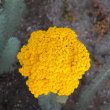
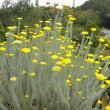
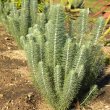
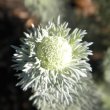


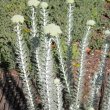
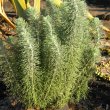


Discuss this plant
Share knowledge, ask a question or give an experience.